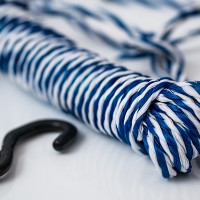Piano tuning is not so light as setting a guitar. If you have this instrument at home and love music, this article will explain you how to key the piece yourself easily. Even with no experience you can fix your problem and tune a piano following the tips introduced.
Don’t let your inspiration leave you just because you always delay or don’t know how to get the piano tuned. The task is not as easy as ABC in very deed, and hiring a piano tuner can be reasonable.
At the same time, why not trying to complete a do-it-yourself project, while saving some money and getting closer to your instrument. You are able to do it with our guide.
What tools do you need to tune a piano?
Piano tuning is a complicated process that requires some special tools. A simple guitar tuner will not suffice. You can get them surfing the internet and ordering necessary tools from the online retailer. Alternatively, rent them or think if there is anybody in the know and. Ask them to give you what you need.
The basic tuning requires at least piano tuning software and tuning forks. If you really want to complete the project yourself without professional help, you should have them at hand. Then, look for tuning hammer (lever, as the picture above shows), mutes and tuning device.
If you consider you will have much busy work, you should know the fact that professional tuners employ even more equipment to do the job. So be ready for the stiff task. Otherwise, contact a pro by leaving your request on HireRush.com. You can submit your task and let a suitable specialist pick it.Leave your application here
Before shifting to the process itself, you must be aware of some more important things. First, is when tuning a piano, you are likely to damage some components. It’s ok, if you have no experience, so never mind. Most probably you won’t be able to harm seriously, so it’s not a big deal.
Although, everything could be repaired, always be careful. Realize that there is a risk and don’t blame anyone, as you’re the only person in charge. Read the instructions and learn how you can tune the home piano yourself. Follow the tips step by step and make you piano sound sweetly.
Piano tuning tutorial
-
Step
First and foremost, choose the best time for tuning. It will be better for you to do the job when you’re home alone. At least take care of your housemates not to disturb and distract you. Besides, close the door and ask them to be as still as the mouse.
Turn the light on. It is necessary for you to see the entire piano inside. When all preparations are done, move on to the tuning process. Make sure you’re ready for work and concentrate.
-
Step
To start with, open the piano top. To fully open the cabinet, you may need to unscrew some pieces. It’s not necessarily, but can help you to increase visibility and let you work with more convenience.
With the help of electro tuner tune the middle octave keys from C to C. This will be the grounding for you, according to which you will be checking the speech of other keys. Find the pin that works the string you want to begin with.
-
Step
Now, damp the adjoining strings with rubber mutes in order to get a pure sound of the string you need. Press the key constantly. Use tuning lever or wrench to fix the pin. Refer to your electronic tuner to understand in what direction and how much you need to turn.
It’s important to avoid sudden and quick movements when applying a tuning hammer. You can easily loosen the string if not turning slowly and carefully. Setting a string may take some time, so arm yourself with patience.
Be aware and try not to damage anything. Besides, always try to strike the string hard. That will provide your device with sound waves it is capable to catch and will ensure you will do the work easier and faster. -
Step
When you get finished with one string, go onto another. In fact you can repeat the same actions with all other keys, and this is what most guides teach people. But that seems not so easy. You’re lucky, cause there is a simpler alternative way.
Put your rubber wedge on the third string only, leaving the first and the second ones free. Apply you hammer to the second string. As previously, continue to press the key firmly. Turn the wrench until the two string sound harmoniously.
For this trick you need an ear for music. Hope you have it, as this way saves far more time. -
Step
Now you need to repeat the process and tune the whole middle octave. Next, move on to other octaves and tune them according to the first one. While doing it, don’t use the tuner. Just refer to the strings of the middle octave. Then do the same acts within each of the octaves.
There you have it. The piano is set. Have some rest today and start playing your tuned instrument getting much pleasure.






I have heard that you need to have your piano tuned whenever it is moved. Outside of that I think the suggestion I received was once a year. I would imagine that you could hire a professional to do it for you and I bet they would be willing to teach you how it’s done while they’re there. I suppose it depends on the person.
You’re right. Unless the piano is moved really carefully and not during a long-distance move, you’ll most likely have to tune it after it’s delivered to your new place. And, hiring a pro to get it tuned is really worth the money you’ll pay.